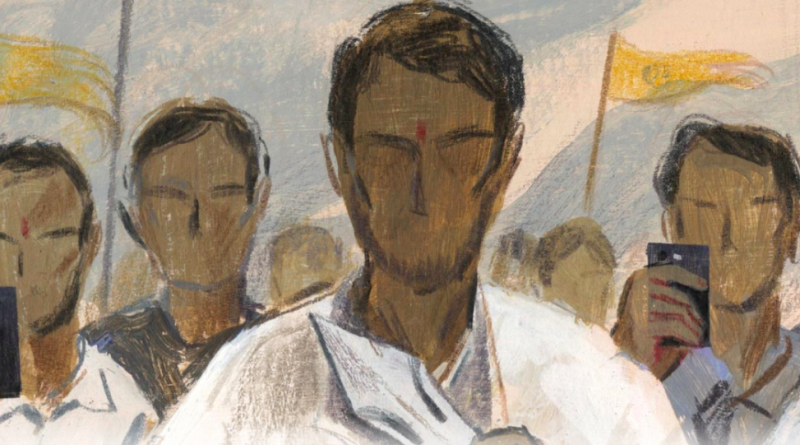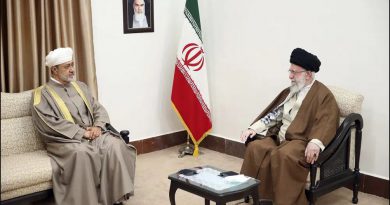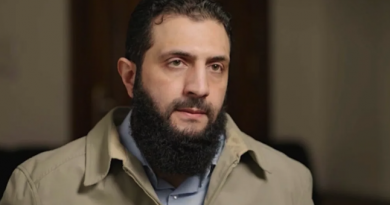Rising Hate in India
by Annie Gowen and Manas Sharma
In some of the lynching cases, members of Modi’s party or its right-wing affiliates incited or organized the mobs or praised the killers after the fact.
Alimuddin Ansari, a van driver, knew the risks. Smuggling beef in India, where the slaughter of cows is illegal in some states, is dangerous work, and Ansari eventually attracted the notice of Hindu extremists in Jharkhand.
One hot day in June 2017, they tracked him to a crowded market. When he arrived with a van full of beef, the lynch mob was waiting.
Reports of religious-based hate-crime cases have spiked in India since the pro-Hindu nationalist government of Narendra Modi came to power in 2014, according to new data from IndiaSpend, which tracks reports of violence in English-language media. The data shows that Muslims are overwhelmingly the victims and Hindus the perpetrators of the cases reported.
The government of India does not record religious-based hate crimes as separate offenses and so does not provide data on the category. The government does monitor incidents of communal violence — such as riots between religious communities — and has data that shows such incidents rose 28 percent between 2014 and 2017.
Some of the violence in the reported cases centers on cows because Hindus — nearly 80 percent of India’s population — believe the animals are sacred, and many states have laws that protect them from slaughter. Violent “cow vigilante” groups patrol the roads, beating and killing those suspected of smuggling beef.
Modi has said that state governments should punish these vigilantes and that his administration is committed to upholding the law, but critics say his party has emboldened Hindu extremists across the country. And the data supports that trend: More than half of the cases reported this year through October came from three states in northern India — Uttar Pradesh, Bihar and Jharkhand — where Modi’s Bharatiya Janata Party, or BJP, enjoys strong support.
BJP spokesman Sudhanshu Trivedi said the government acts promptly if tensions occur between groups. He noted that India has suffered only “minor incidents” in the last four years, and there were no large-scale religious riots.
“Our objection is that the political class and a certain section of media want to highlight the [religious] angle in order to malign the image of government,” he said. “This is not happening for the first time. It has been happening for years.”
An ambush at the market
The vigilantes had been tracking Ansari for over a week. Early on the morning of June 29, 2017, a tea stall owner who had been working as an informer for the vigilantes called with a tip that Ansari was headed to the market in a white van full of beef, according to the judge’s ruling in the case and suspects’ statements to police. Deepak Mishra, a Brahmin priest, sent a WhatsApp message to a group of vigilantes calling them to the scene, court documents show.
The vigilantes trailed the van on their motorbikes, then stopped Ansari at the crowded market, pulling him from the driver’s seat, according to court records. They beat him with bamboo sticks and a fiber rod.
“I started hitting him with my fists and kicking him,” Mishra recounted, according to his statement to police. “I hit him in the stomach and on his chest.”
A video of the scene shows the mob jeering, kicking and slapping a dazed Ansari. Eventually, they overturned his van and set it ablaze, spilling raw beef across the road. The sight of the meat only seemed to inflame the mob, the prosecutor said. They shouted “Beat, beat beat him more!”
When police arrived, the men scattered, but it was too late for Ansari. He lost consciousness in an ambulance and was pronounced dead on the way to a hospital. The postmortem report said Ansari died of shock as a result of multiple injuries.
A killing on screen
Ansari’s killing played out in almost real time on WhatsApp, the global messaging platform that is widely used in India, its largest market, and has increasingly become a vehicle for the spread of hate speech and incendiary fake news there and elsewhere.
His wife, Mariam Khatoon, and son watched the killing unfold on the phones of their neighbors, who had gathered in a shocked group outside the family’s modest concrete dwelling in the town of Ramgarh that morning.
“My father was a good man. When money was scarce, he did not eat so we could eat,” said his son Shahzad Akhtar, 22, a student. “Seeing him killed right in front of us, on screen, was agony.”
Harsh Mander, director of the Center for Equity Studies in New Delhi, said the perpetrators film these lynchings and post online to communicate a threatening message to the victims, who are often minorities or from lower-caste communities.
A history of violence
Modi’s career has been shadowed by allegations of religious intolerance since 2002, when he, as the chief minister of the state of Gujarat, was accused of failing to do enough to stop Hindu-Muslim riots that killed more than 1,000. For this, he was denied a visa to visit the United States on religious-freedom grounds, making the trip only after he became prime minister in 2014.
In an interview with The Post in 2012, Modi showed little regret for what happened in Gujarat. “I have not done anything wrong,” he said, “and I am committed to the human cause.”
Now, in a string of incidents, his party members have been accused of supporting or even inciting violence against Muslims, leaving many in the country’s Muslim community of 172 million — the third largest in the world — fearful.
In some of the lynching cases, members of Modi’s party or its right-wing affiliates incited or organized the mobs or praised the killers after the fact.
In Ansari’s killing, Nityanand Mahto, spokesman for the BJP in Ramgarh district, was released in early July on bail pending appeal after being jailed for a year for his role in inciting the mob. He denies involvement, saying he was in the crowd because he was trying to stop the violence. The prosecutor said he took part in the beating. “I was framed,” he said.
An attempt at justice
Eleven men and one juvenile suspected in Ansari’s death were arrested and charged with murder. In March, the adults were convicted and sentenced to life in prison, prompting protests; their supporters claim Ansari died because he was beaten in police custody. All but the juvenile have since been released on appeal; one of the convicted men has died in an unrelated accident.
The high court judge who ordered the release of the first seven men noted that although they were members of the mob, there was a lack of evidence against them in the assault. Later, even those convicted of the conspiracy were released on bail.
In July, some of the accused perpetrators went to the home of Jayant Sinha, a member of Modi’s council of ministers. Sinha fed them sweets and hung marigold garlands around their necks, prompting an international firestorm.
Sinha said he believes they are innocent but said he feels regret for honoring the men.
Article first published on Washington Post.



